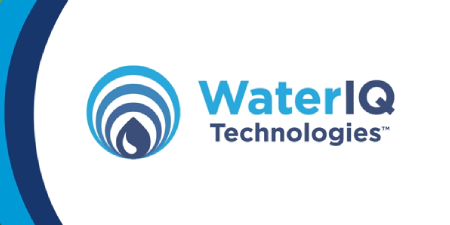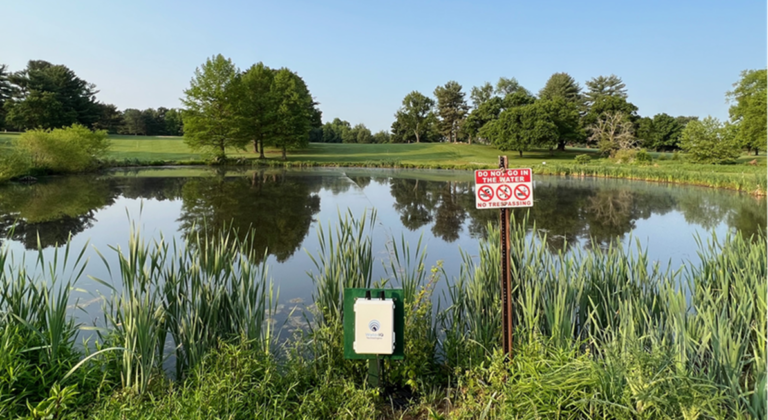Residents impressed as Ginger Cove lake’s quality and clarity look better than it has in 40 years
Located in Valley, Nebraska, Ginger Cove is a premier spring-fed, sand-bottom lake home community founded in 1966. Spanning nearly 100 acres of lake and 40 acres of greenspace, Ginger Cove also tout’s Nebraska’s longest genuine covered bridge. The community boasts 160 residential lots that are home to both full-time and part-time residents. The lake at Ginger Cove has an average depth of 17 feet, with some areas reaching a depth of 40 feet. It is fully equipped for recreational activities, such as fishing, boating, and water sports. Over the years, generations of residents have cherished the picturesque beauty of this close-knit lake community.
The Challenge
For the past four decades, water quality management has been a continuous challenge for the residents of Ginger Cove. Numerous methods have been implemented to control the growth of nuisance filamentous algae and harmful blue-green algae. For example, an aeration system was installed in the lake during the early 2000s to alleviate seasonal algae blooms. Although the system helped enhance oxygen levels and aquatic life, it failed to significantly improve water quality or decrease the severity of algae blooms.
In the following years, the HOA board consulted with water quality specialists to find a resolution to the escalating algae blooms and declining water clarity. One recommendation was to apply an Alum treatment to neutralize the algae nutrient, phosphorous. However, this was costly and ineffective as it did nothing to reduce nitrogen – the other nutrient critical to plant and algae growth. Then in 2016, a new HOA board member named Carly Dana initiated a revamped water quality program aimed at both reducing chemical use to ensure a more environmentally friendly approach to water quality management.
According to Dana, “There was a realization that years of chemical-based treatments and other techniques had not proven to be effective. Therefore, we looked toward the latest science and technology to discover new and more effective solutions that were environmentally friendly so that fish and other wildlife were not harmed by their use.”
To address the high levels of phosphorus and nitrogen in Ginger Cove’s lake, a bacterial enzyme application program was implemented during the summer months. The program aimed to reduce muck accumulation, and improve water clarity during the first season. Since then, the bacterial enzyme application program has continued for the past six years, resulting in a notable reduction in phosphorus levels, undetectable nitrogen levels, and fewer filamentous algae blooms.
However, despite its success, the program had not been able to prevent harmful blue-green algae blooms. The lake still faced this issue, where visually unappealing blooms disrupted the residents’ and their pets’ enjoyment of the lake. In some instances, the water tested positive for low levels of microcystin, a potent cyanotoxin that is harmful to aquatic animals and can produce adverse health effects in humans, from a mild skin rash to serious illness or in rare circumstances, death. The sole option considered at the time to address Harmful Algae Blooms (HABs) were chelated copper chemical treatments, resulting in high costs and damage to the bacterial enzyme program and the lake’s ecosystem.
Blue-green algae is actually a form of cyanobacteria that thrives during the spring and summer months. Homeowner Associations (HOAs) such as Ginger Cove have been under tremendous pressure to implement measures that can effectively mitigate the proliferation of this menace to lakes and ponds. However, the trial and error approach to finding a solution to the cyanobacterial blooms had resulted in the use of chemicals that were proven harmful to both wildlife and algal variants in the lake. Recent research has revealed that many of these chemicals have long-term ecological impacts on the ecosystem and must be avoided.
The consequences of not treating the cyanobacterial blooms are severe as they pose a significant threat to public health, can cause damage to the infrastructure, reduce property values, and result in a loss of revenue from recreational activities. In addition, the economic cost of treating algae blooms can be significant. A 2019 report from the Environmental Protection Agency (EPA) estimated the annual cost of managing cyanobacteria blooms in the US to be $4.6 billion. Therefore, finding effective, environmentally friendly solutions to control cyanobacterial blooms is critical.
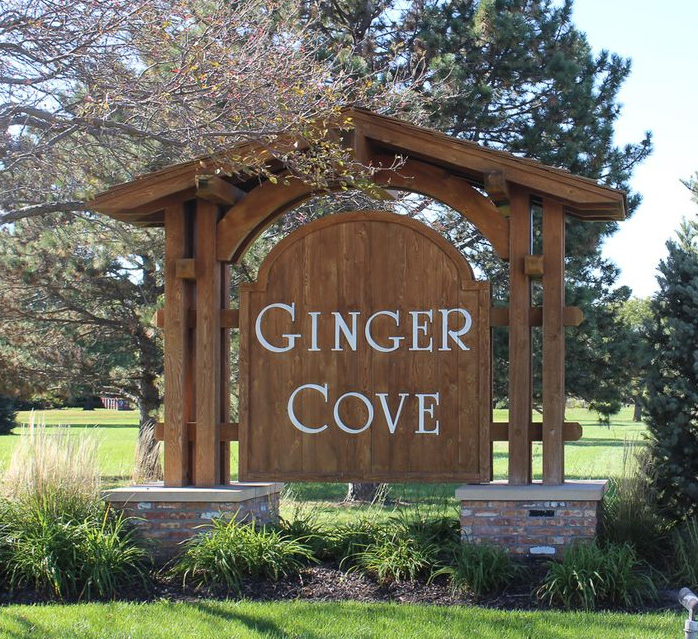
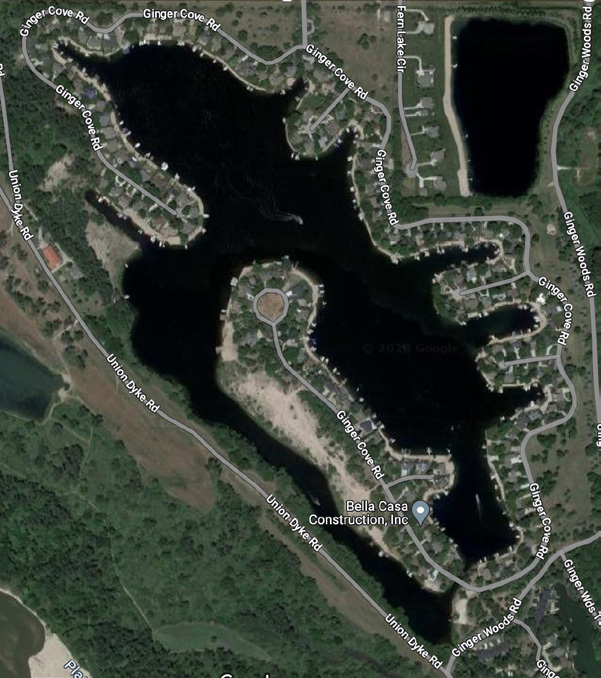
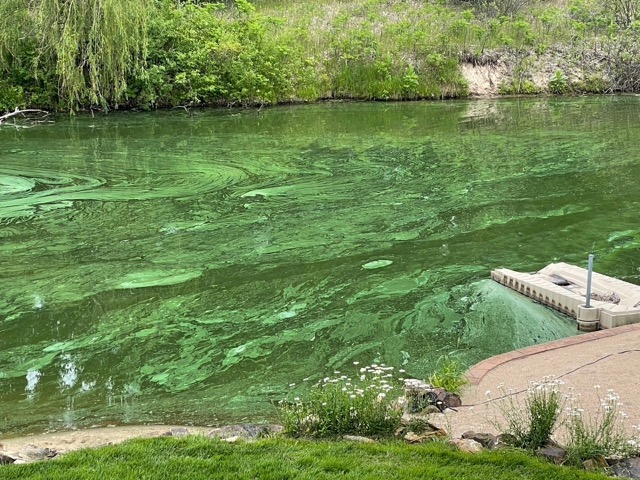
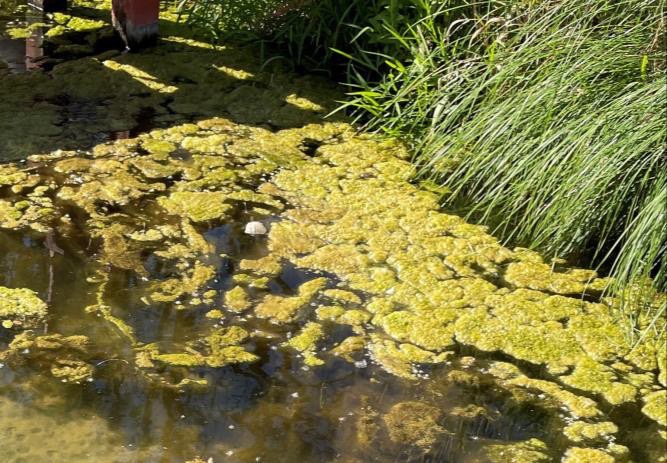
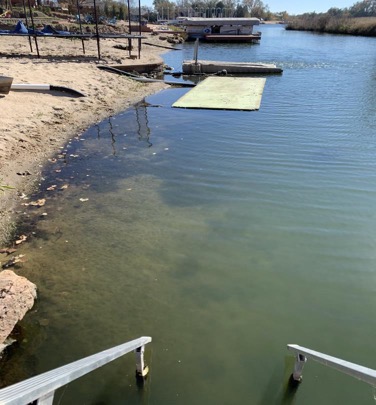
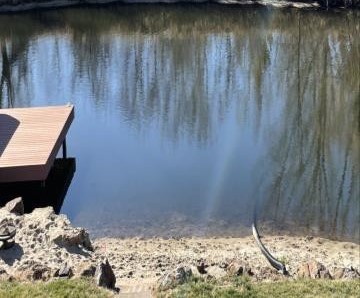
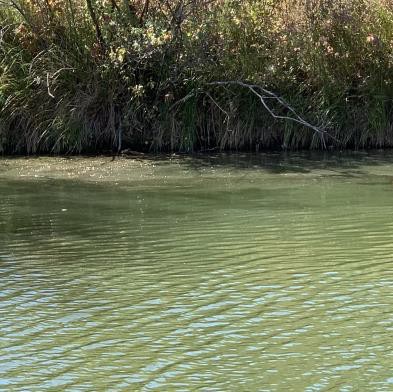
The Solution
In searching for an environmentally friendly, chemical-free approach to deal with the algae, ultrasonic technology was tested in the fall of 2020. It had proven to be a useful method for removing algae for years. However, the newer ultrasonic algae control systems emit more than 2,000 frequencies of sound which damage the cell walls of the algae, causing them to break down and die off. WaterIQ systems offer a revolutionary solution for managing and mitigating the harmful effects of algae blooms in water bodies.
In the case of Ginger Cove, the first tests involving an ultrasonic solution began in a 1-acre cove experiencing a blue-green algae bloom. The WaterIQ ultrasonic solution was able to kill off the bloom in about 2 weeks. The technology was proven effective and the pilot successful. As a result, the Ginger Cove HOA board voted to purchase six devices to cover the entire 90 surface acres of the lake. These proved to be successful and controlled small algae blooms throughout the season in as little as 12-48 hours. By 2022, the lake’s water quality was excellent, with the average water clarity reading measuring between 4.5 to 8 feet deep in some areas.
However, in late July of 2022 a contractor accidentally cut the power to one of the units where it was left offline for several weeks, resulting in an algae bloom in its location. Once the power was turned back on, the lake did not experience another bloom for the rest of the summer.
The latest systems by ultrasonic systems are effective in treating a wide range of algae species, including cyanobacteria, and are safe for fish, plants, and other aquatic life. Additionally, the new units are energy-efficient and require very little maintenance, making them a cost-effective and environmentally friendly solution for algae control. Several studies have shown that this technology can significantly reduce algae levels, making them an attractive option for owners/managers seeking a safe and effective way to manage algae blooms. This makes ultrasonic algae mitigation an excellent remedy for HABs.
It has been estimated that approximately 95% of the 70,000 species and two million sub-species of algae can be efficiently mitigated with ultrasonic anti-algae systems, which have been proven across thousands of water resources.
The HOA board voted to purchase six devices to cover the entire 90 surface acres of the lake.
The Results
Ginger Cove residents have been very impressed with the lake’s water quality and clarity, with many of the longest-residing homeowners stating that the lake looks the best it ever has in over forty years. Ginger Cove has been successful in improving the water quality of the lake with the help of WaterIQ Technologies. The use of high-frequency sound waves to disrupt the growth of algae and other harmful organisms, without harming fish and other wildlife has been a benefit to the entire community. These improvements have led to much higher and more sustainable water quality levels, making the lake a safer and more enjoyable place for people to swim, fish, and relax.

